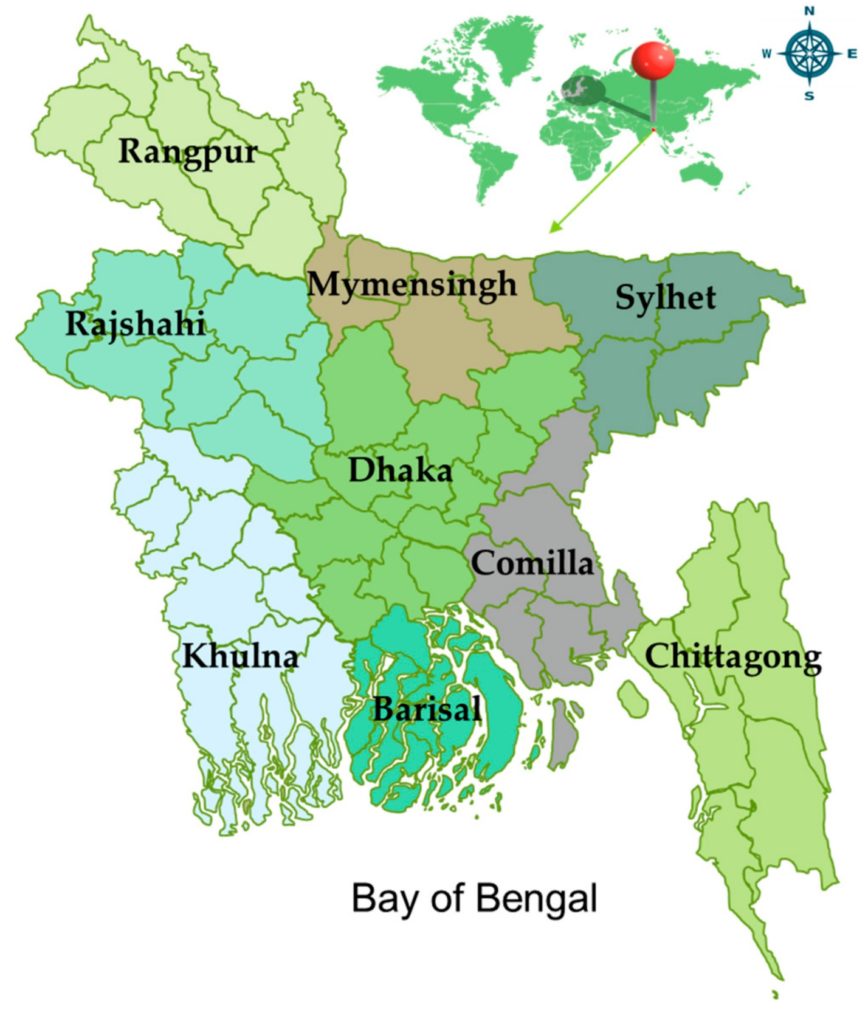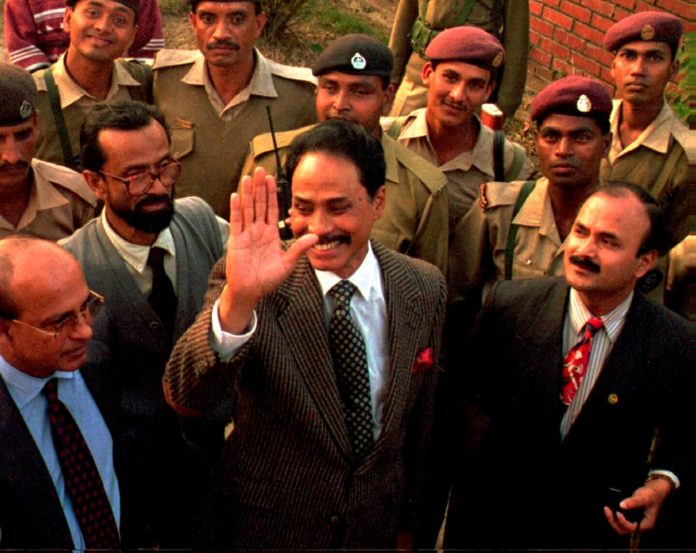There is a misconception in the world in general and the region in particular about the strength and capabilities of the Bangladesh Armed Forces. As Korea and Vietnam have shown, a land war in Asia depends primarily on the effectiveness of ground troops in their own environment. True, preponderance of Air Force may have a pulverizing effect on the movement of the Army, particularly in flat, delta lands, but on the other hand, once off the roads, an army melts with the countryside presenting almost no visible targets whatsoever to hostile air activity. The Indian Navy can blockade Bangladesh at will but to what long term purpose, given the ability of the Bangladesh Army, fighting on interior lines of communications, to pose a formidable threat to all significant Indian civil and military objectives lines of communications on the periphery of Bangladeshi borders within easy reaching distance (less than half a day’s infantry infiltration march?).
There are today between 50-60 infantry units in the Bangladesh Army grouped into 6 infantry divisions and some independent infantry brigades. Over the past 12 years every infantry battalion has done two tenures of two years each fighting the “Shanti Bahini” sponsored by the Indians in the Chittagong Hill Tracts. Four years of actual battle inoculation in tough, jungle and hilly terrain in all-year round humid conditions does a lot to build up the fabric of a fighting Army. While the events around them building up, Gen Ershad has quietly been motivating and training Bangladesh Armed Forces for the last decade into a fine fighting machine. Officered and manned by personnel who, from the rank of General downwards normally only get promotion after due combat service in the Hill Tracts, the Army is not a pushover in any sense of the word. To make any real headway into Bangladeshi territory, India will be forced to deploy at the least 12-15 divisions, can their logistics be able to sustain this large force based on the vulnerable staging areas or more important, can they afford to pull that much away from the Pakistani and Chinese borders? With the loyalty of the Sikh and Gurkhas, who used to make up the hard-core of the Indian infantry, suspect India can at best inflict material and economic damage from the air and the sea, occupation a la 1971 is out. When one considers that Pakistan had a maximum strength of 3 and a half divisions in 1971 in then East Pakistan and faced with a hostile population forced to defend all its L of Cs, the odds become very favourable for Bangladesh. A lot of people tend to under estimate Gen Ershad because he is not flamboyant or charismatic in the demagogue sense, however he has quietly worked to re-establish organisation and method in the Bangladeshi nation with firm authority. Compared to the dozen or so coup attempts during the stormy days of his late predecessor, Gen Zia ur Rahman, the period of rule of Gen Ershad has been relatively tranquil with no hiccups from military quarters at least, but then again the Bangladeshi uniformed personnel have never had it so good welfare wise.
The question arises, what is the necessity of maintaining such a well-trained, motivated fighting machine if one does not seize an opportunity when it beckons? When the balloon goes up, will the Bangladeshis sit back and wait for the Indians to deal with them in their turn?
The Indians have deployed 3 fully equipped Mountain Corps primarily against China under Eastern Command based at Calcutta. These are balanced in such a way so as to pivot against Bangladesh as the need arises. To the North/North West of Bangladesh they have 33 Corps HQ at Sukna with 17 Mountain Division at Gangtok, 20 Mountain Division at Bingori and 27 Mountain Division at Kalim Pong with an Assam Rifles Battalion at Gangtok. To the North/North East 4 Corps HQ is located at Tezpur with 21 Mountain Division at Rangia, 2 Mountain Division at Dinjan with 3 Assam Rifles Battalion and 5 Mountain Division at Towang with 1 Assam Rifle Battalion. 3 Corps HQ is at Ranga Pahar with 8 Mountain Division at Zakhma along with 14 Assam Rifles Battalions, 5 Border Security Force Battalions and 1 Central Reserve Police Battalion. 8 Mountain Division is earmarked for airlifting to Kashmir. The third formation of 3 Corps, 57 Mountain Division, was in Sri Lanka and on coming back has started moving to East Punjab. Additionally there are 6 Assam Rifles Battalions, 2 Border Security Force Battalions and 1 Central Reserve Police Battalion. At the moment 4 divisions of the Indian Army can move against Bangladesh (33 Corps and 21 Mountain Division ex-4 Corps), but to cover eventualities two other divisions of 4 Corps can be deployed with over at least 20 battalions of Assam Rifles and 5 battalions of BSF also available, an attacking force of 6 divisions PLUS, not counting the two infantry brigades directly under Eastern Command, 16 Bde at Lec Maikong and 167 Bde at Barrackpore. This scenario surmises that the Chinese have gone to sleep and have forgotten their principles, particularly about helping a friend in need!

The deployment of the Indian attacking forces would probably be on a North South axis with the Indian 33 Corps trying to force Dinajpur Rangpur way to the Bogra area, 4 Corps coming down through to Mymensingh and Sylhet. The Indians will make an effort for Chittagong through the Hill Tracts with the help of the Shanti Bahini. Chittagong and Chalna will be naval blockaded, the Bangladesh air effort suffers from being 10-12 minutes away from Indian airfields. With three infantry divisions positioned to face the threat from the North and a couple of brigades for the Indian bid for Chittagong, Bangladesh is more than a match for the Indians, leaving 2 complete infantry divisions and 3/4 infantry brigades available for multiple front offensive operations against the vulnerable areas of Calcutta and Agartala, two vital Indian communications centres. The Bangladeshis have the upper hand with all Indian air force operational airfields within easy reaching distance of dedicated infantry combat teams. If the Indian railway lines are not disrupted over a hundred places and at least ten Indian airfields in flames by ground interdiction someone is not doing their job. One has no doubt that when push comes to shove the Bangladesh Armed Forces will fight the war on Indian territory.
Indian mode of operations is usually to utilise bluff through psychological warfare, the facts speak for themselves. One is under no obligation, having talked about the Indian Order of Battle (ORBAT) to discuss the Bangladeshi ORBAT or likely plan of operations, enough to know that the Indians will be hard put to maintain their hegemony in the face of Bangladeshi determination. Bangladesh has the will and the capacity to not only remain
independent but be able to have absolute freedom from Indian tutelage, any self respecting nation will be more than inclined to do that. The Bangladeshi people need Lebensraum not in the material sense of land extension, but in the sense of free commerce and industry with their contiguous and adjacent areas. Only by the creation of number of self-governing independent and sovereign countries on its periphery will Bangladesh realise its true golden potential for its people. Those who think this is highly fanciful and imaginative will please answer this question, how many of us had heard about Lithuania, Moldavia or Estonia etc. six months ago, what to talk about a communist-free Europe and a reunified Germany?




